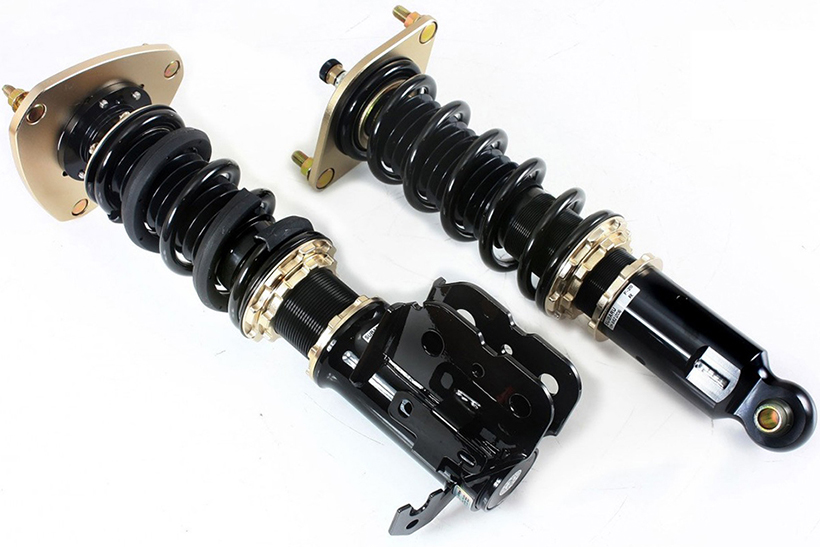Whether you’re looking to lower your car, or improve your handling, you’ll need the right springs and dampers or coilovers to achieve your goals. In this guide we take a look at all suspension components and examine how they work.
Once you’ve understood how suspension works, be sure to check out our guide to the best car suspension brands in 2023.
What are suspension springs?
In a very basic view of the suspension system, the springs support the weight of your car. They control the ride height and its vertical motion over bumps. They do this by storing the energy used to compress them by bumps in the road and then releasing it back into the car in a controlled manner thanks to the dampers.
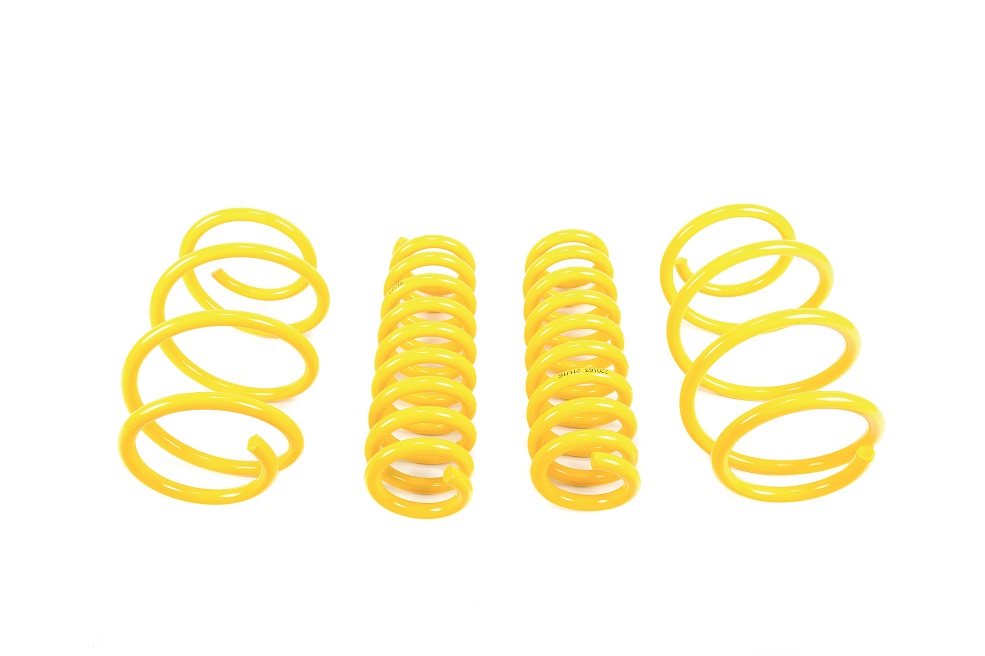
What is suspension spring rate?
The spring rate, usually referred to in lbs/in (though you’ll also see kg/mm), dictates how much a spring will compress depending on the load applied. For example, a spring with a linear rate of 250lbs/in simply compresses one inch for every 250lbs load applied to it. So a load of 125lbs will compress it 1/2” and a 500lbs load will compress it 2”. A spring with a progressive rate gradually gets stiffer as the load increases. A 150/500lbs/in spring will compress 1” with a 150lbs load on it, but may need 250lbs to compress the next inch and then 400lbs for the third inch until it reaches 500lbs load to move another inch. Looking at it the opposite way, as the load increases, let’s say 150lb at a time, the spring compresses less and less until 150lb may only compress it a further 1/4”.
The wire diameter, material and number of coils determine the spring rate of any spring. The larger the diameter of the wire the higher the spring rate. However, the more coils the spring has the lower the spring rate. Progressive springs rates are possible on a single coil spring by tapering the wire so that the thinner wire has a lower spring rate than the larger diameter wire. Most high-performance cars use the system of ‘stacking’ coils of differing rates on a coilover shock absorber. This allows both progressive and digressive suspension set-ups.
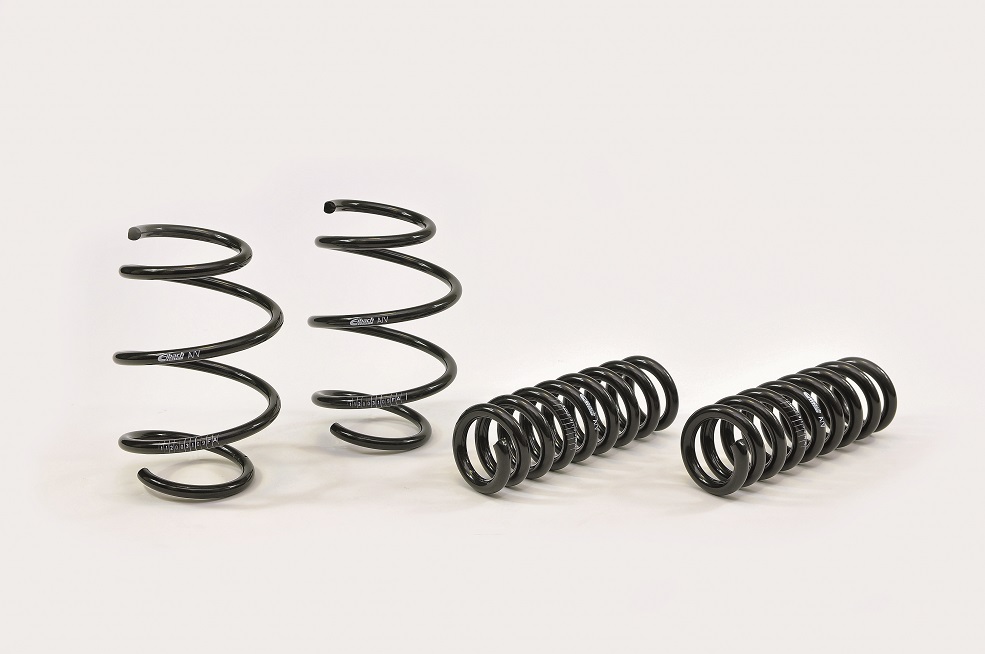
What are progressive springs?
Altering the coil diameter as opposed to the wire diameter creates progressive springs. These are used for ease of manufacture and cost. On coilovers, however, stacking two or more springs on top of each other create progressive rates. A progressive spring rate starts soft and then ‘progressively’ gets harder. As the suspension starts to travel, the spring rate is soft and comfortable, soaking up small bumps and keeping the tires in contact with the road. As load increases, the spring rate also increases allowing for control in more spirited situations.
This brings us to the use of a stacked pair of springs for optimum performance using a lighter spring for soaking up smaller bumps, known as a ‘tender’ spring, fixed-rate or progressive. It is designed to fully compress into coil bind and then allow the main spring to deliver the final spring rate. There is also another type of spring used in a stacked spring setup called a ‘helper’ spring, which has a very low spring rate and is designed to retain the main spring onto the spring perches during full suspension travel only or when the suspension is ‘hanging’, having virtually no effect on the spring rate of the combination.
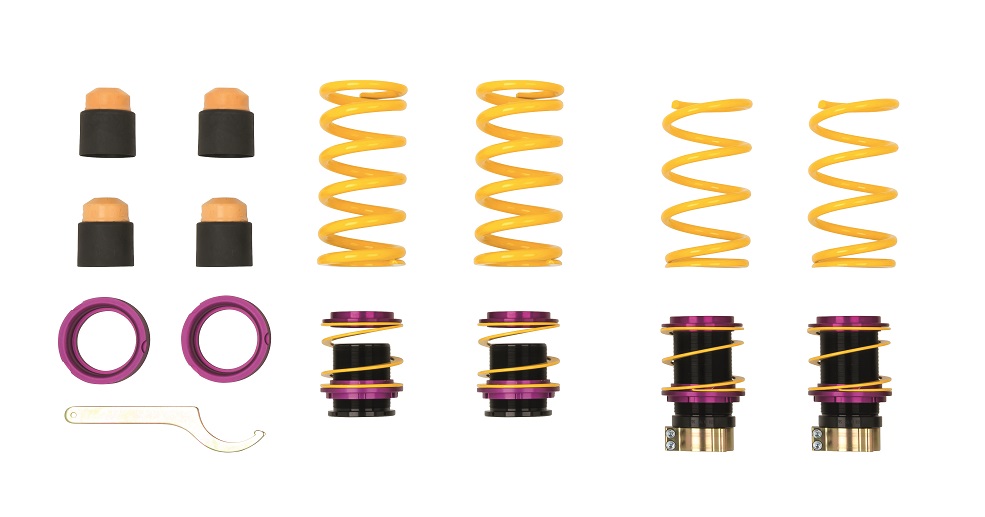
How do height-adjustable springs work?
If you’re happy with a fixed drop in ride height then lowering springs are great but if you want height adjustment you’d normally go down the coilover route. However, if you’ve got a car with electronically adjustable dampers, like those found on most modern performance BMWs, and you want to retain these for their functionality but also want to lower your car and have adjustable ride height then you need a height-adjustable spring (HAS) kit.
Now, obviously, you can’t adjust the height of the spring itself as such as a coil of metal does not have settings you can just select, so these kits actually use adjustable spring perches. These use the same sort of collar adjuster that you’d find on a coilover setup. It offers the same easy adjustment method and a wide range of adjustment, allowing you to obtain the perfect ride height on more of a budget.
What are dampers?
When your car hits a bump, energy from the wheels transmits to the suspension springs. These compress, storing the energy until the bump is passed. Then the spring returns it by extending back to its original installed length. As the spring does this, it will extend past its original position until the car returns the energy to the spring. This will set up an oscillation in the car and it will continue to bounce, uncontrolled, for a long while.
These uncontrolled bounces will significantly affect the handling of the car. So, there needs to be some way of controlling the spring, and this is the function of the damper. It resists the fast movement of the spring by absorbing the energy of the spring. This is usually through heat absorption, and dampers are there to stop the spring from bouncing uncontrolled.
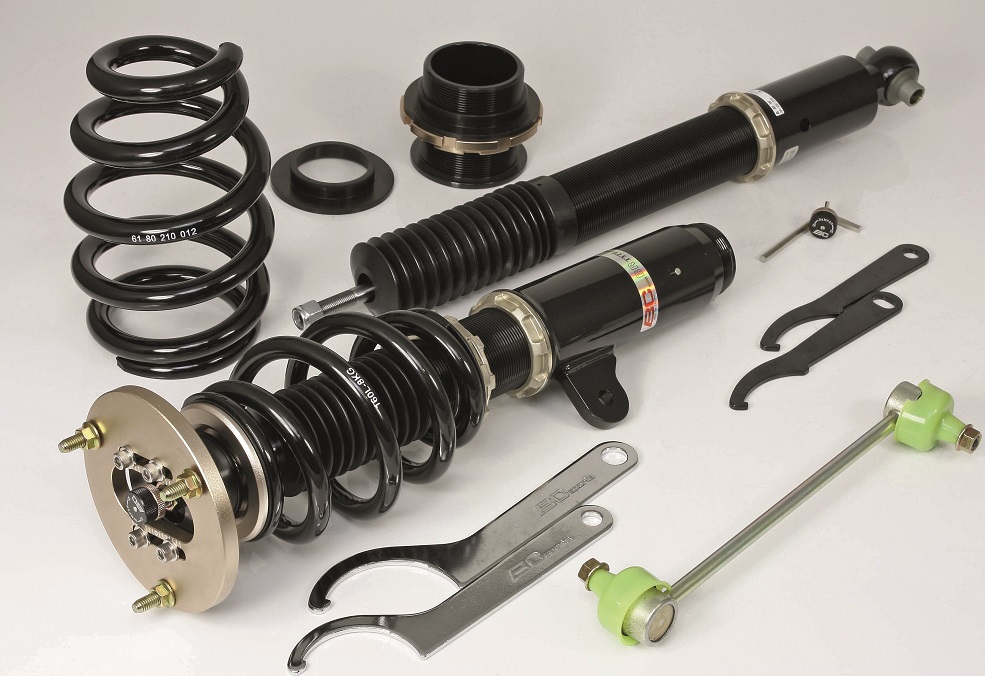
How do dampers work?
A damper is a tube filled with hydraulic oil and with a piston rod inside it. At one end of the piston rod there is a piston valve with holes in it. These holes dictate how quickly the oil can pass through them and therefore how quickly the piston can move. By altering the size of the holes in the piston and by stacking discs on either side of the piston to generate a pressure drop, you can adjust the bump and rebound resistance to movement. The hydraulic oil needs to be temperature stable or the thinning of the oil due to increases in temperature during use will result in reduced damper efficiency. They must also have an anti-foaming additive because any aeration of the oil will have a drastic effect on the dampers’ effectiveness because the trapped air will be compressible.
Dampers can use a monotube or twin-tube design. A monotube damper contains a piston housed within a single tube and this type of damper has several positive features. First of all, you can mount the damper at almost any angle and because the tube containing the oil is in direct contact with the surrounding air it helps to cool the oil inside the damper more effectively, which means you can drive harder for longer without any drop-off in suspension performance. A twin-tube damper is effectively a tube inside a tube with a valve at the bottom. The inner tube functions similarly to the monotube damper with a piston and orifice valves, but the outer tube acts as a reservoir of oil.
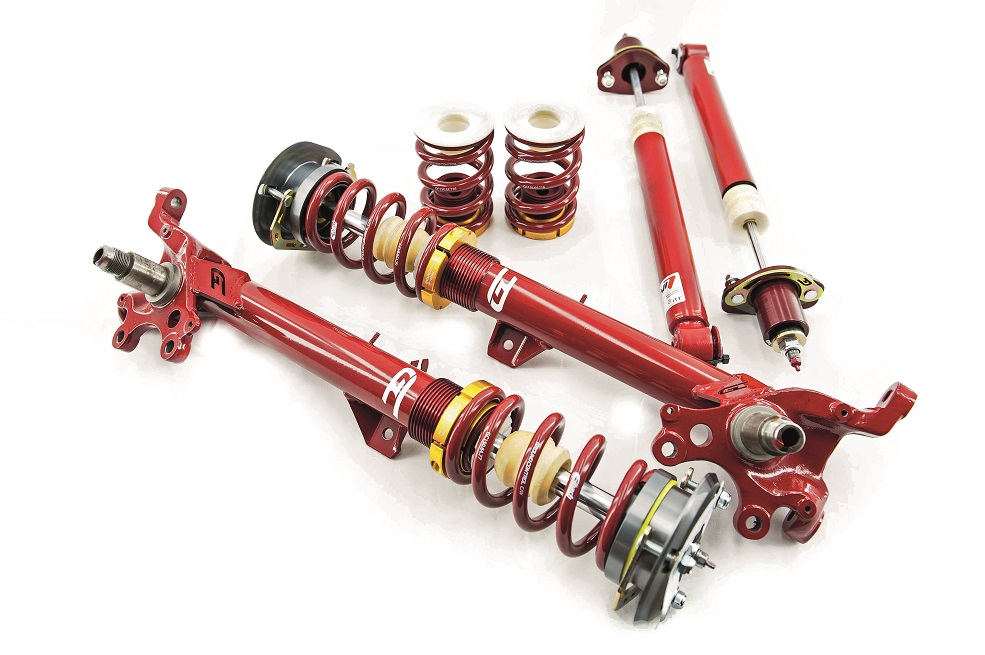
What are coilovers?
If you’re looking to go low and improve handling, coilovers are what you need. Coilovers are just coil springs fitted over dampers. However, they offer more than a simple spring/damper combo with even the most basic coilovers coming with height adjustment. Most coilovers will offer some form of damping adjustment. As the price increases, so does the level of functionality offered by a setup. With most coilovers, the lower you go, the more you’re reducing spring travel by compressing it and the more you’re stiffening your ride.
Pretty much all coilovers will offer one-way damping adjustment. This usually combines compression and rebound behaviour into one adjuster. Increase your front damper rates and you’ll up understeer by increasing rear-end grip; increase rear rates and you’ll increase front-end grip, but reduce rear end grip.
Two-way adjustable dampers will let you independently control compression and rebound settings; compression (or bump) dictates how the damper will react to the initial encounter with a bump. Too firm and the ride will be harsh and could cause bouncing. Too little damping and the car might dive under braking and roll heavily through corners.
Rebound affects how quickly the damper returns to its normal height. A high rebound setting will cause the piston to move a lot more slowly and can even cause the car to leave the ground like on touring cars; too low, and you’ll get wallowy suspension. Four-way dampers can adjust for high- and low-speed compression and rebound independently.
Coilovers aren’t the cheapest suspension upgrade, but they do allow you to lower the car while while improving handling.
For a more in depth look at coilovers, check out our coilovers guide.
Passive, semi-active, active, adaptive suspension – what are they?
When it comes down to the job of controlling the vertical movement of the wheels, there are a few variations. These are active, passive, semi-active, and adaptive suspension. It sounds complicated, and while they certainly can be, understanding what they do isn’t too hard at all, so here goes…
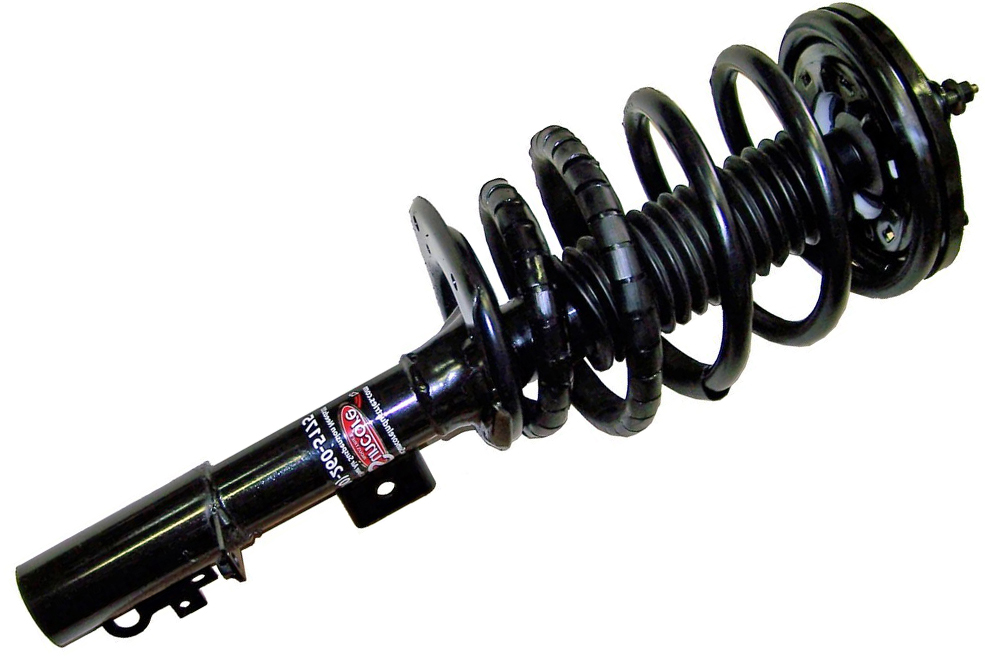
What is passive suspension?
Passive suspension is what most cars come with from the factory. It’s also what almost all race cars use too; it’s the good old gas/oil fitted shock absorber and coil spring combo. Passive suspension is light, simple, and effective. Passive basically means it not adjustable or adaptable to changing situations without stopping and physically adjusting parts yourself.
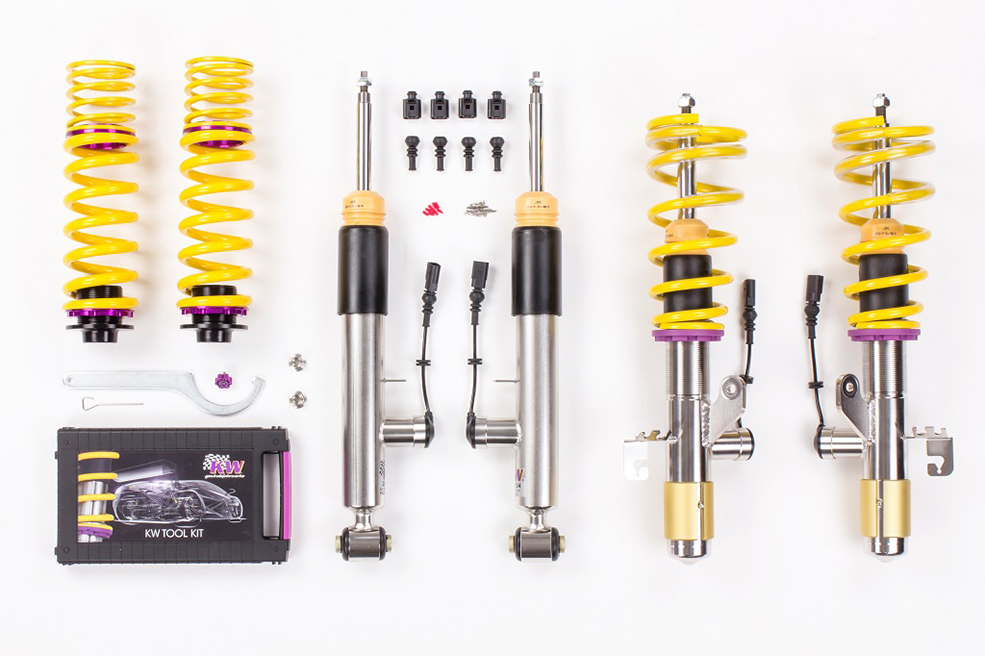
What is semi-active/adaptive suspension?
Semi-active and adaptive are basically the same thing. They are certainly the most common type when it comes to production vehicles with trick suspension designs. While there’s a huge amount of variations, they all do the same basic thing, enable the shock absorber to stiffen or soften while on the move. Many cars with semi-active suspension allow manual in-car adjustment via switches. The main function of all designs is to help prevent body roll when cornering. It is also used to combat squat under acceleration, and dipping under cornering, without the need for stiff suspension.
Differentiating between ‘semi-active’ and ‘active’ is hard, as exactly what constitutes what depends who you listen to. Most people consider anything that offers in-car ride height adjustability to be ‘active’. This covers aftermarket air and hydraulic kits, not to mention things like the hydropneumatic system fitted to many large Citroens. However, some people consider ‘active’ suspension to be purely systems with fully automatic height adjustability. Which brings us neatly on to…
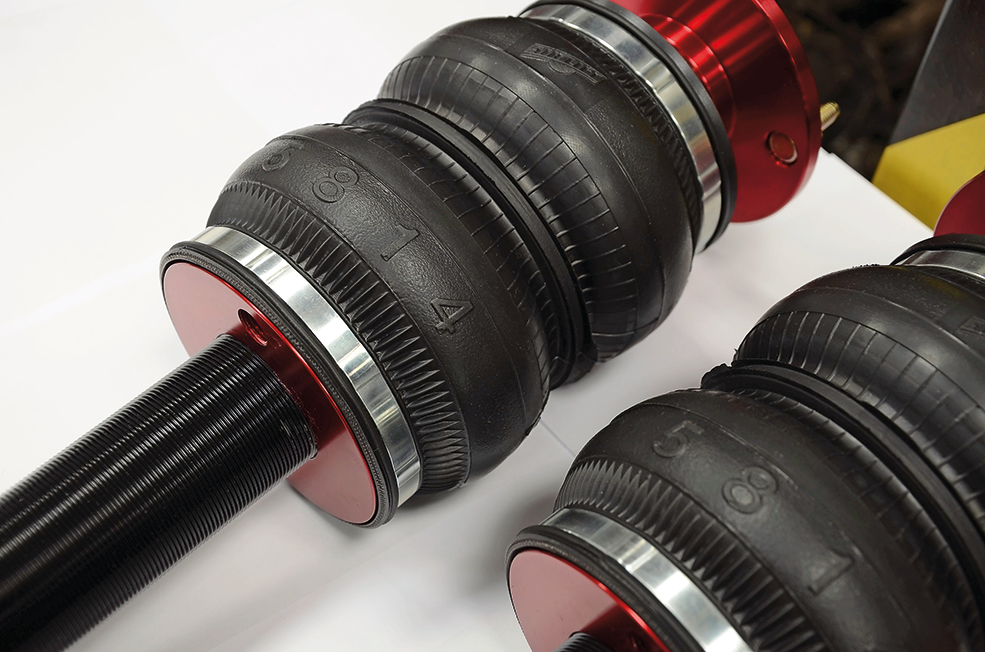
What is fully active suspension?
Exactly what is active is open to debate. One thing for sure is it means adjustable ride height. This can either be manually via in-car switches, or automatically via a series or sensors and clever ECU.
Height adjustable suspension is used for countless reasons. Think aftermarket hydraulic and air suspension kits we all know and love; self-levelling systems that use it to prevent the vehicle from being lower to the ground when carrying heavy loads; systems that facilitate ride height changes to allow the vehicle to traverse differing surfaces; or even on things such as buses and trailers to simply allow easier loading or unloading. Active kits can vary massively in speed and effectiveness. They can be adjusted with air, hydraulic fluid, and in some sophisticated systems even electromagnets. The result is the same; easy and super-quick height adjustability.
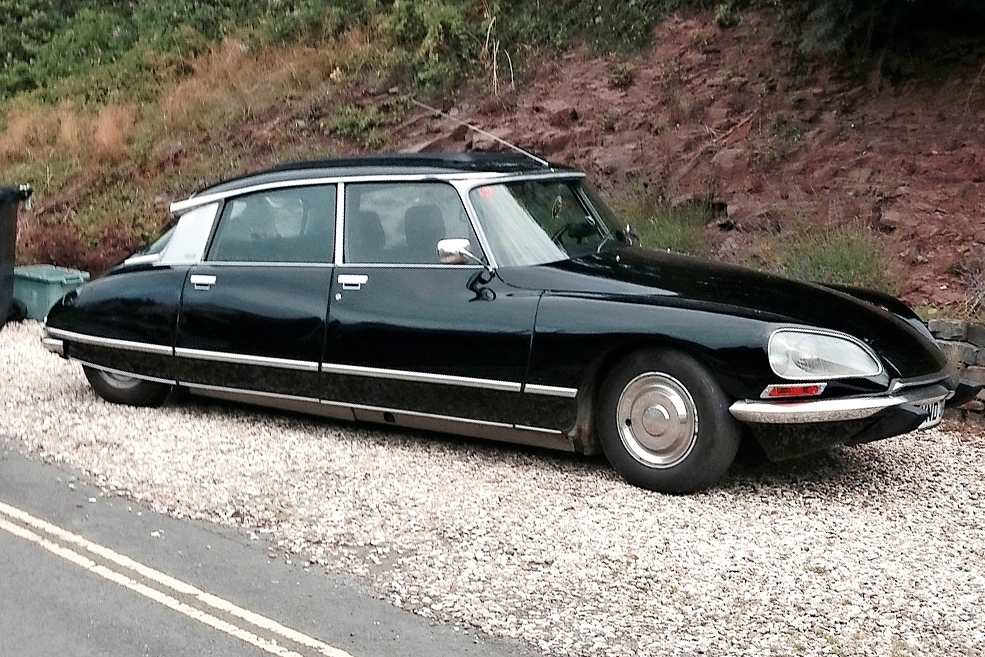
What is OEM active adjustable suspension?
While standard air suspension often bares little resemblance to the aftermarket, it’s been around for over 100 years!
It was the 1950s that really brought about the biggest changes in active suspension though. Some production cars brought in automatic adjusting and self levelling regardless of load or driving surface; most of these kits were also in-car height adjustable. The most famous setup is the Citroen hydropneumatic system. This used a mix of hydraulics and compressed gas, and they still use this same basic design to this very day on some vehicles. Many manufacturers have used the system too, under licence. These include Rolls Royce, Maserati, and Mercedes. From the 50s there have been literally hundreds of vehicles some form of active air suspension.
In the ’90s there was a trend, especially on large Japanese sports cars such as the Toyota Supra and Soarer, to have semi-active systems fitted, though it’s been quickly forgotten about and many owners don’t ever realize. By now, most have been replaced with aftermarket passive suspension kits. Since 2000, active suspension technology has really taken off on production cars. Even many small hatchbacks have a ‘sport’ button to stiffen the suspension. Many vehicles use modern computer technology to adjust the suspension height and stiffness in a fraction of a second to suit any surface and driving style.
Guide from Performance BMW. Words: Gerry Speechley, Elizabeth de Latour Photos: Eibach, ST Suspensions, KW, Ground Control, BC Racing.

